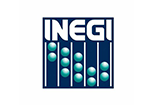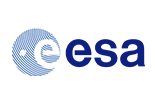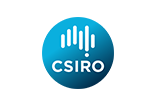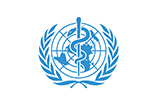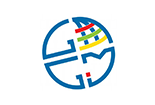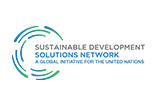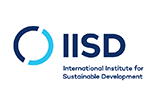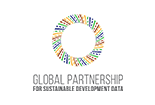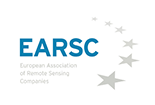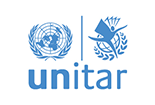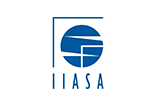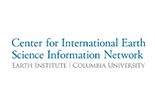Tools to enable UN Member States to use EO to deliver SDG 11 & the NUA

Sustainable Development Goal 11, also known as the urban SDG, aims to make cities and human settlements inclusive, safe, resilient and sustainable. As the sole SDG focusing on cities, it underscores the importance and relevance of local and subnational perspectives to the achievement of sustainable development worldwide. In addition to Goal 11, the New Urban Agenda (NUA) recognizes the increasing role of cities and local communities in the implementation and localization of the SDGs, in an integrated manner.
Earth observations (EO), acquired remotely by space-borne, airborne and in situ sensors, and ground-based observations represent reliable, timely and continuous sources of information for Goal 11 and urban issues. EO data can be used to map and monitor changes in built-up area and the urban extent. Multi-temporal population and land data, combined with satellite images of the Earth at night that capture nighttime lights, can inform our understanding of changes in urban infrastructure and availability of electricity, including in local communities, slum areas and informal settlements. EO data and imagery can indirectly support the generation of disaggregated maps of global, regional or national population data, complementing census data and filling in data gaps.
Satellite imagery and ground-based measurements also help track spatial patterns, atmospheric transport, and trends in urban air pollution, and when combined with auxiliary sources, can provide insights into exposure rates and impact on human health. Citizen science data also provide valuable input to EO data for SDG 11 and the NUA, helping develop detailed spatial distributions of air pollution across cities, contributing to post-disaster, infrastructure damage assessment, among other applications.
During this year’s Virtual UN World Data Forum, we will bring attention to how EO data are used across local communities, member states, research networks, global initiatives, and the UN to monitor and drive progress on urban sustainable development. Our session, titled Tools to enable UN Member States at national and local level to use Earth observations to help deliver SDG 11 and the New Urban Agenda, will discuss progress on the “Earth Observations Toolkit for Sustainable Cities and Communities”, an ongoing collaboration between UN-Habitat, the EO4SDG initiative from the Group on Earth Observations (GEO), GEO’s Human Planet and Global Urban Observation and Information initiatives and partners, with participation from regionally representative cities and countries.
The Earth Observations Toolkit is an online knowledge resource in development, which can serve as a first step for countries and cities interested in applying EO to support their SDG monitoring needs and urban policy priorities. Key toolkit components include guidance about, and links to, relevant EO datasets and tools that can, and already do, support the definition and refinement of SDG 11 indicators, as well as innovative approaches and national or city-level experiences of EO uses for SDG 11 and the NUA. The toolkit also aims to facilitate engagement among cities, national agencies, and EO experts, and promote knowledge sharing and collaboration between cities and countries.
Our session features the following speakers and topics:
Robert Ndugwa from UN-Habitat who will introduce the session, highlighting the importance of timely EO data and technologies for producing knowledge to better assess urbanization gaps and needs, and the need for building national and subnational capacities to apply these data in support of evidence-based policy formulation.
Monika Kuffer of the University of Twente, Faculty of Geo-Information Science and Earth Observation will discuss how Earth observations can help fill data gaps in monitoring and assessing land cover and land use change, urban morphology, or environmental conditions in urban areas, including slums and informal settlements. She will also discuss the needs for open source frameworks, such as the Remote Sensing for Slum Mapping and Characterization in sub-Saharan African Cities (SLUMAP) project, which focuses on assessing local, national and global data requirements and user needs.
Thomas Kemper of the European Commission’s Joint Research Center will discuss the GEO Human Planet Initiative and its purpose of generating global data and knowledge to advance our understanding of societal processes and their impact on Earth systems, and to generate useful indicators to inform policy. He will also illustrate examples of how global gridded population datasets, produced by combining information from censuses with satellite-derived geospatial features, can help obtain high resolution population density maps and delineate cities, urban and rural areas, based on density thresholds.
Dilek Fraisl of the International Institute for Applied Systems Analysis (IIASA) will discuss the contributions of citizen science data in support of Goal 11 and the NUA. She will also present examples of relevant applications, such as the CityOases project; a partnership between the city of Vienna and IIASA that aims to improve the database of open urban spaces and identify people’s perceptions about them, helping inform indicator 11.7.1 (open public space in cities).
Nale Mudau of the South African National Space Agency (SANSA) will discuss experiences from a continuing collaboration between SANSA and South Africa’s Statistics Office to integrate EO data into national level monitoring and reporting of SDG 11 indicators, such as 11.3.1 (land use efficiency). She will also present examples of use of satellite and aerial imagery to inform urban policies and support the implementation of development solutions.
Samira Oudday of Tunisia’s National Statistics Office will discuss Tunisia’s experience in applying the use of EO data to monitor indicators 11.2.1 (access to transportation), 11.3.1 (land use efficiency) and 11.7.1 (open shared public space in cities) in two cities, as part of a pilot launched in collaboration with UN-Habitat and the UN Economic Commission for Africa. She will also present examples of other EO applications to inform spatial planning and assessment of informal expansion of buildings.
Sandra Liliana Moreno Mayorga of Colombia’s National Statistics Office (DANE) will discuss how DANE is using or adapting global methodologies developed by UN-Habitat to monitor and report on SDG 11 indicators, using EO and cloud computing platforms for data storage and processing, and increasing free and open access to geospatial and EO datasets.
Jon Waterhouse, a Native American from the University of Idaho, will discuss the Indigenous people of the world and their place in the SDGs, presenting examples of joint EO – Indigenous knowledge applications.
The session will conclude with an interactive Q&A. EO datasets and tools, as well as city and national experiences presented in this session, will be shared via the Earth Observations Toolkit. A beta version of this online resource will be made available via the UN-Habitat portal towards the end of 2020.
To access the pre-recorded sessions please register to the UN Virtual World Data Forum here.
About the author
 Argyro Kavvada serves as the Manager of NASA’s Earth Sciences Division’s Sustainable Development Goals Activities to extend uses of Earth science and applications in support of the United Nations Sustainable Development Goals (SDG). She is also the Executive Secretary for the international Earth Observations for Sustainable Development Goals (EO4SDG) initiative from the Group on Earth Observations (GEO) and the NASA representative to the Committee on Earth Observation Satellites SDG Working Group. In this role, she has built a network of thought leaders and collaborators in the Earth observation and international development landscape.
Argyro Kavvada serves as the Manager of NASA’s Earth Sciences Division’s Sustainable Development Goals Activities to extend uses of Earth science and applications in support of the United Nations Sustainable Development Goals (SDG). She is also the Executive Secretary for the international Earth Observations for Sustainable Development Goals (EO4SDG) initiative from the Group on Earth Observations (GEO) and the NASA representative to the Committee on Earth Observation Satellites SDG Working Group. In this role, she has built a network of thought leaders and collaborators in the Earth observation and international development landscape.




